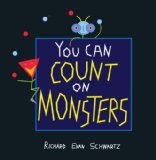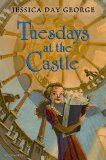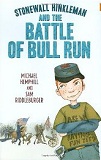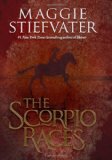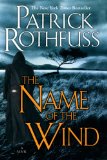Happy New Year!
What I like to do, ever since New Year’s Day 2001, is use New Year’s Day to post my list of Sonderbooks Stand-outs, my favorite books I read in the previous year.
I always do wait until the year is OVER to decide which books were my favorites, because, the truth is, I always hope to get a lot more books read than I actually do finish.
The list will not be Newbery or Caldecott or Printz predictions. I think I’ll make another post about those in a couple weeks. These are just the books that I, personally, most enjoyed reading this year. They were not all published in 2011, but my rule is that I had to read them in 2011.
Oh, and today the Cybils announce their short lists. These are great reading, but I’m not even going to peek until I’ve chosen my Sonderbooks Stand-outs, because I don’t want to be influenced.
This year, there’s a catch: I’m way behind. I’m way behind on writing reviews, and I’m way behind on posting reviews.
Now, I have a very good excuse. I had a stroke at the end of July, and wasn’t recovering as quickly as I’d hoped. In fact, as of October, I was feeling worse instead of better. But when I went to the ER about it, they told me I hadn’t had another stroke and just sent me home, so I decided to try to ignore it.
However, a few days before Christmas, I saw the neurologist. He was not impressed with my tales of slight dizziness, which I had to admit was nothing at all as bad as when I actually had the stroke. But then he did a neurological exam and found that my eyes aren’t tracking together if I look up and to the right. He said I probably had another stroke, a mini-stroke this time.
So, it seemed perhaps I shouldn’t ignore my symptoms after all. On Tuesday, I noticed at work that now I was seeing double when I looked up and to the left as well. The neurologists’ office said I should go to the ER for that, though they did a CT scan that didn’t show any problems. I had an MRI & MRA done on Thursday and now need to wait for an appointment to go over the results. And on top of everything else, I’m still feeling a persistent low-grade dizziness and am extra tired. And this all happened right in the middle of trying to get Christmas gifts and cards sent.
What it all boils down to is I haven’t been posting much. I’m reading as much as ever — lying around a lot, so of course! But getting the reviews written and posted is harder. I’ve missed a lot of work, and when I do work, I tend to be too tired to do much at home. So I’m getting more and more behind.
I’m afraid that by the time I post the 2011 Sonderbooks Stand-outs, no one will care any longer. But I’m going to do it anyway! (After all, the fun of having your own website is doing it for your own enjoyment.) Here is my plan:
1. I will make my list. I’ll post it, with links to the reviews that are already up.
2. I’ll post the already-written reviews of stand-outs, probably one category at a time.
3. All the while, writing reviews of the books I haven’t reviewed yet.
4. I’ll post the rest of the reviews as I write them.
Some day, maybe I’ll catch up! I’m probably going to be forced to stop reviewing every book I read, but for now I’m going to at least review the 2011 Stand-outs.
I’ll get back to you soon!
 to review them. And I need to compare those to the outstanding picture books I read earlier in the year. I usually am not a big fan of more contemplative books without a story, but somehow I totally fell for Stars, by Mary Lyn Ray, and illustrated by Marla Frazee. I hope it wins the Caldecott Medal this year.
to review them. And I need to compare those to the outstanding picture books I read earlier in the year. I usually am not a big fan of more contemplative books without a story, but somehow I totally fell for Stars, by Mary Lyn Ray, and illustrated by Marla Frazee. I hope it wins the Caldecott Medal this year.